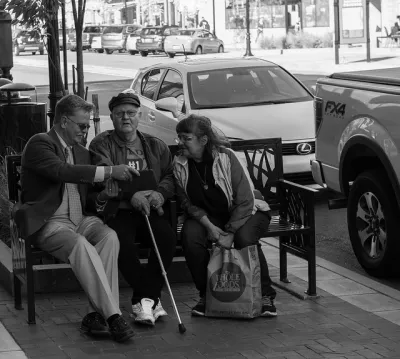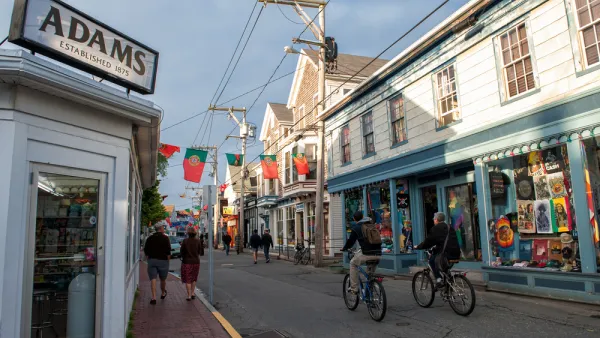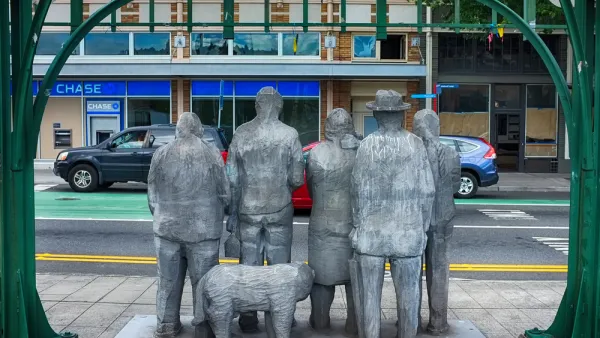Making streets, sidewalks safer for people with limited mobility.

By Jessica Zimmer
Before the City of Concord renovated its Main Street, residents and visitors had to walk up two steps to access the restaurants and storefronts along the western side of the road.
New Hampshire’s capital city eliminated the double-step curbs as part of a larger downtown complete streets project, which aimed to improve access for people with disabilities and spur economic development. The city also created additional handicapped parking spaces and converted a portion of the Main Street from four lanes to two lanes and added a six-foot center median to slow vehicles and reduce the distance for pedestrians crossing the busy street.
“We call Concord’s Main Street New Hampshire’s Main Street, and Concord’s downtown New Hampshire’s downtown,” Concord City Engineer Ed Roberge said. “Making Main Street more accessible is something in which the city takes great pride.”
Concord’s project is just one example of ways communities are trying to make streets and sidewalks more accessible for senior citizens and people with physical disabilities. Across North America, cities are employing different tactics including removing lanes of traffic, adding rest benches with shade and medians with greenery, installing raised crosswalks to slow traffic, working with businesses to build ramps and eliminating obstacles in sidewalks.
These measures are necessary to help avoid injury and inconvenience to the 18.2 million or 7.5 percent of adults in the United States that have extreme difficulty walking or are unable to walk a quarter mile. As the country’s population ages, an increasing percentage of Americans with disabilities are 55 and older.
One factor driving good design is the adoption of complete streets policies, a national initiative being spearheaded by Smart Growth America, a Washington, D.C. non-profit organization. Complete streets is an approach that advocates for transportation projects being planned, maintained and designed so all users can access the roadway.
Emiko Atherton, director of the National Complete Streets Coalition, a Smart Growth program, said one of complete streets’ goals is to eliminate traffic fatalities.
“You can design away a lot of behavior,” she said.
FULL STORY: Breaking Down Barriers

Analysis: Cybertruck Fatality Rate Far Exceeds That of Ford Pinto
The Tesla Cybertruck was recalled seven times last year.

National Parks Layoffs Will Cause Communities to Lose Billions
Thousands of essential park workers were laid off this week, just before the busy spring break season.

Retro-silient?: America’s First “Eco-burb,” The Woodlands Turns 50
A master-planned community north of Houston offers lessons on green infrastructure and resilient design, but falls short of its founder’s lofty affordability and walkability goals.

Test News Post 1
This is a summary

Analysis: Cybertruck Fatality Rate Far Exceeds That of Ford Pinto
The Tesla Cybertruck was recalled seven times last year.

Test News Headline 46
Test for the image on the front page.
Urban Design for Planners 1: Software Tools
This six-course series explores essential urban design concepts using open source software and equips planners with the tools they need to participate fully in the urban design process.
Planning for Universal Design
Learn the tools for implementing Universal Design in planning regulations.
EMC Planning Group, Inc.
Planetizen
Planetizen
Mpact (formerly Rail~Volution)
Great Falls Development Authority, Inc.
HUDs Office of Policy Development and Research
NYU Wagner Graduate School of Public Service




























